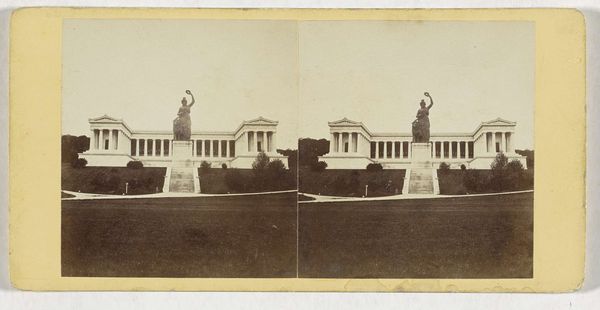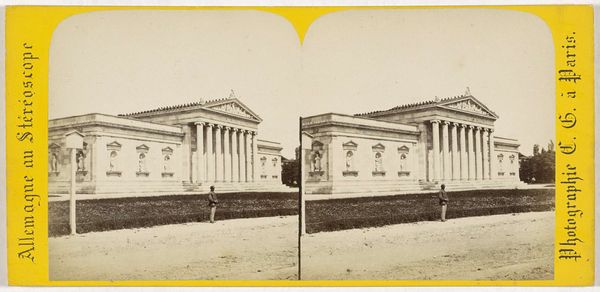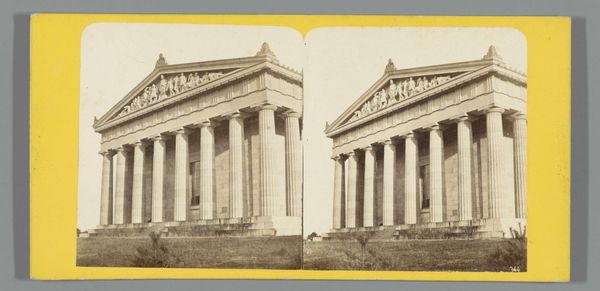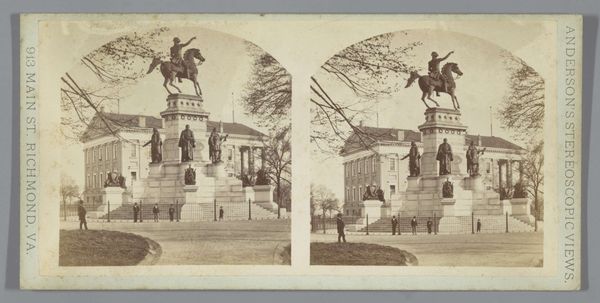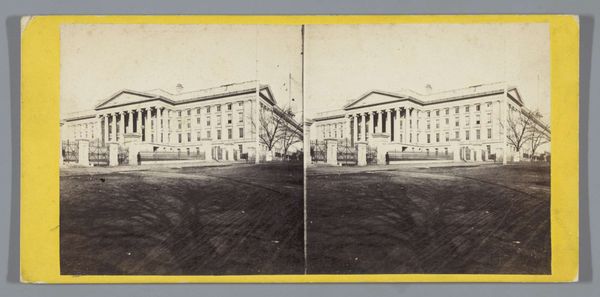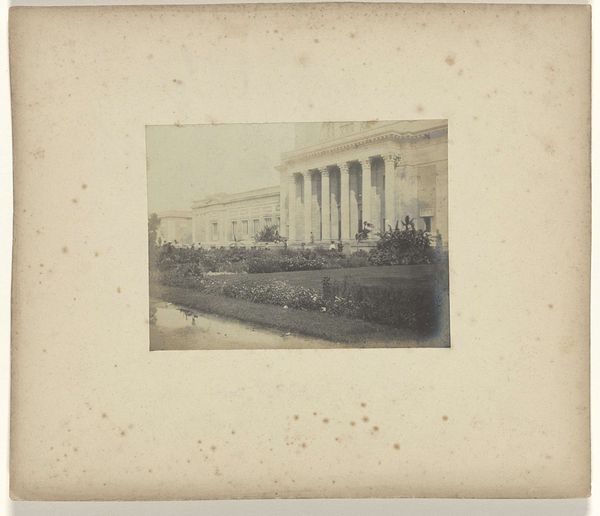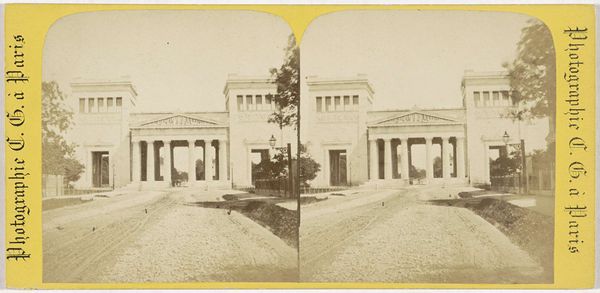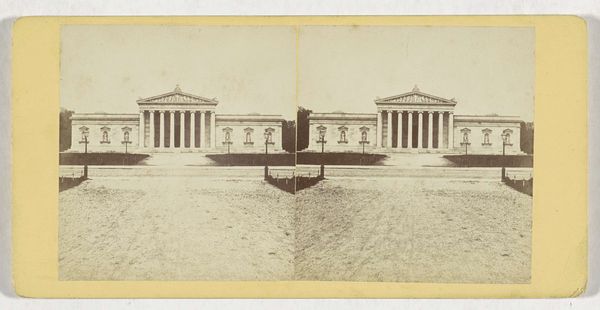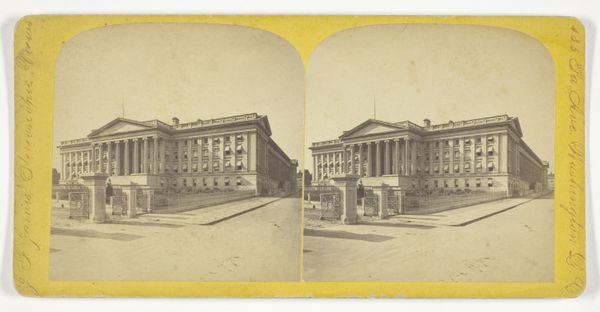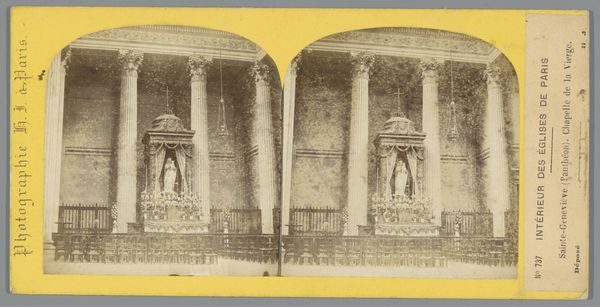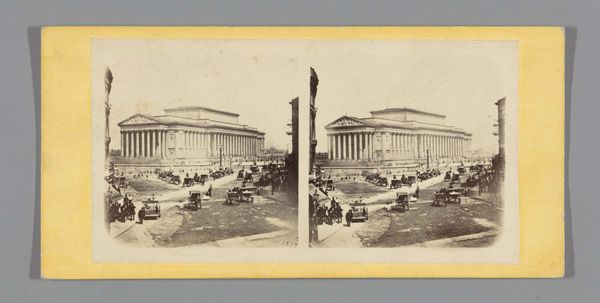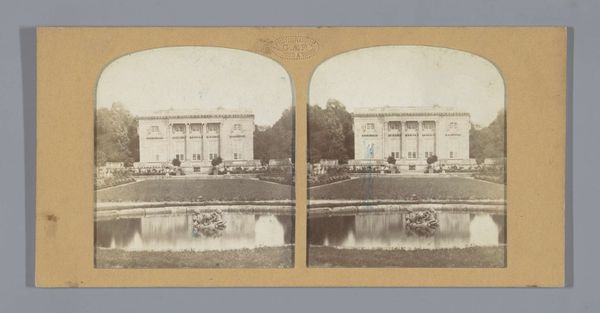
print, photography, sculpture
#
neoclassicism
# print
#
landscape
#
photography
#
sculpture
#
19th century
#
building
Dimensions: height 85 mm, width 170 mm
Copyright: Rijks Museum: Open Domain
Curator: Today, we’re looking at a photograph by Georg Böttger, dating from around 1870 to 1885, titled "Standbeeld van Bavaria te München"—or, "Statue of Bavaria in Munich". Editor: My first impression? Grandiose and a bit austere. It's like looking at a memory, sepia-toned and monumental. That statue, perched high above the classical building...there's something strangely powerful about its stoicism. Curator: Indeed. The composition emphasizes a strong horizontal axis, punctuated by the verticality of the columns and the statue. This creates a balanced yet imposing visual rhythm, reinforcing the themes of civic pride and classical idealism central to Neoclassicism. Editor: Neoclassicism! See, I just get 'ancient gods are judging you' vibes. That building could be right out of ancient Greece. The statue, what’s she holding above her head? Victory wreath maybe? There's such a human element amidst all the rigid lines, isn't it ironic? Curator: Precisely, there is an intentional dialogue here. The subject, the statue of Bavaria, with its raised wreath of victory and familial lion, stands as a representation of strength. Positioned before an architecture clearly referencing antiquity, there is the attempt at legitimizing and celebrating contemporary Bavarian power through appeals to classical notions of governance. Editor: It works. There's this strange tension, though. The softness of the photograph versus the sheer stone-cold monumentality of it all. Plus, the emptiness around it... like she's guarding a secret, and daring anyone to try and learn. Curator: A fair analysis. As a photograph, its materiality presents a stark record. The monochrome flattens the form into an exercise in contrasting light and shadow, creating an iconic representation with complex symbolic implications. Editor: For me, it really encapsulates an era, it feels suspended in time. You can almost feel the weight of history and ambition embedded in those stones and on Bavaria’s expression. It's powerful, yet strangely detached. Curator: A wonderful synthesis of thoughts! Böttger's piece certainly makes us reflect on the power of imagery to embody not just places but entire epochs and the ideologies they represent.
Comments
No comments
Be the first to comment and join the conversation on the ultimate creative platform.
